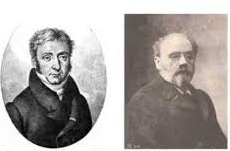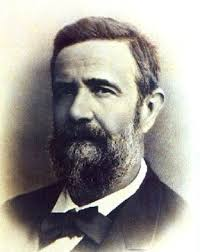Science > Chemistry > States of Matter > Hydrogen Bonding Consider two polar molecules water H2O (molecular mass 18 and dipole moment 1.8 D) and nitrosyl fluoride ONF (molecular mass 49 and dipole moment 1.8 D). As their dipole moments are the same, their boiling points should be comparable. But boiling point of water is 100° […]
Category: Chemistry
Science > Chemistry > States of Matter > Interaction Between Molecules Intermolecular forces are the forces of attraction between neighbouring molecules, situated at a distance much closer in comparison with their molecular diameter. They vary from state to state of matter. These forces exist in all states of matter. Liquid and solid states of matter […]
Science > Chemistry > States of Matter > Change of State of a Substance In this article, we shall study a change in the state of a substance. Melting (Solid → Liquid): The process of change of solid substance into its liquid state is called melting or fusion. The constant temperature at which the solid […]
Science > Chemistry > States of Matter > Introducion A matter is defined as anything that has mass, which occupies space and may be perceived by senses. There are three states of matter, viz. (a) solid, (b) liquid, and (c) gaseous states. Historical Perspective of States of Matter: Ancient Indian philosophers suggested that all the […]

Science > Chemistry > Concept of Atomic Mass and Equivalent Mass > Atomic Mass by Dulong Petit’s Law In previous articles, we have studied Cannizzaro’s method and law of isomorphism method to determine atomic mass. In this article, we shall study to calculate atomic mass by Dulong Petit’s law. Specific Heat: The amount of heat […]

Science > Chemistry > Concept of Atomic Mass and Equivalent Mass > Law of Isomorphism Method In the last article, we have studied determination of atomic mass by Cannizzaro’s method. In this article, we shall study the law of isomorphism and its use to find the atomic mass of a substance. This law was given […]

Science > Chemistry > Concept of Atomic Mass and Equivalent Mass > Cannizzaro’s Method In the last article, we have studied the concept of atomic mass and to calculate the average atomic mass. In this article, we shall study the Cannizzaro’s method for determination of atomic mass. This method was proposed by Cannizzaro, Stanislao (1826-1910), […]
Concept of Atomic Mass

Science > Chemistry > Concept of Atomic Mass and Equivalent Mass > Concept of Atomic Mass The smallest particle of an element which can take part in a chemical reaction is called an atom. According to Dalton’s atomic theory atom is the smallest particle of an element which is indivisible. In modern research, it is proved that […]

Science > Chemistry > Laws of Chemical Combinations > Gay-Lussac’s Law of Combining Volumes In the previous article, we have studied the law of reciprocal proportions. In this article, we shall study Gay-Lussac’s Law of Combining Volumes. A French chemist Joseph L. Gay – Lussac in 1809, put forward this law. Statement : Whenever gases take […]

Science > Chemistry > Laws of Chemical Combinations > Law of Reciprocal Proportions In the previous article, we have studied the law of multiple proportions. In this article, we shall study the law of reciprocal proportions. The law of reciprocal proportions was given by German chemist Ritcher in 1792. Statement: The weights of two or […]